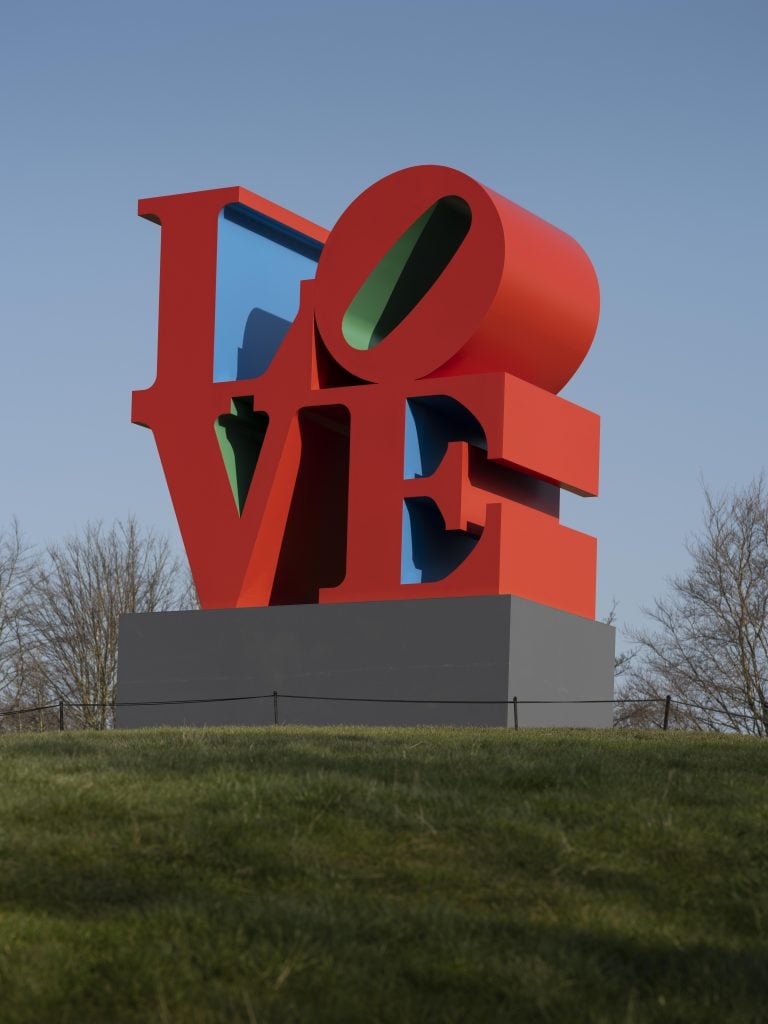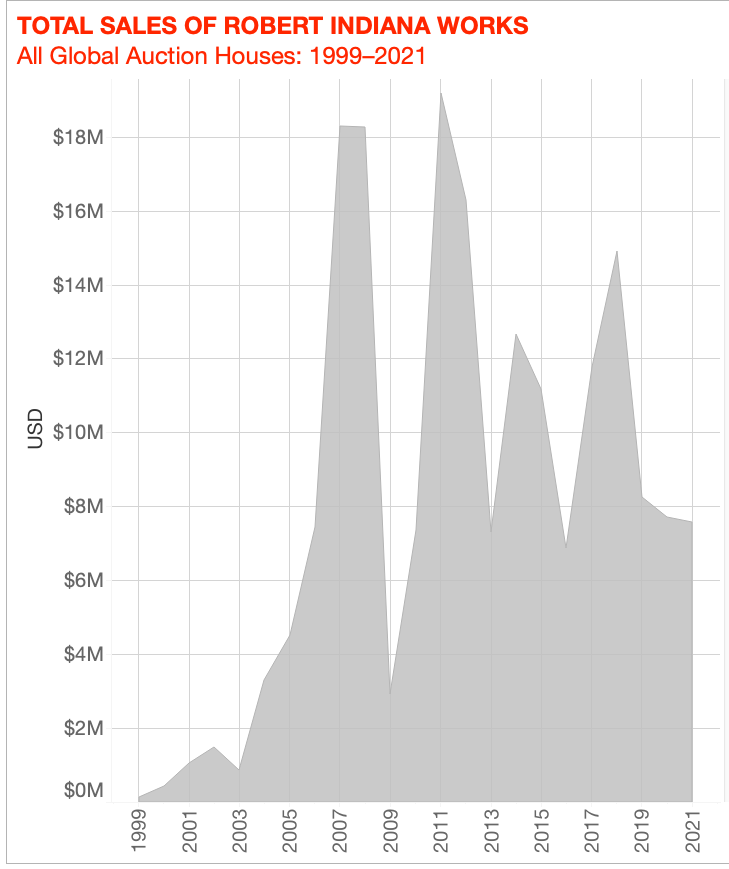The Appraisal
Robert Indiana’s ‘Love’ Made Him Famous. But Has a Spiteful Legal Battle Tarnished His Market Legacy for Good?
We analyzed the auction data of the artist to find signs of what may be in store for the artist's market.

We analyzed the auction data of the artist to find signs of what may be in store for the artist's market.

Naomi Rea

Over the weekend, the U.K.’s first major survey of work by the late American Pop icon Robert Indiana opened at the sprawling Yorkshire Sculpture Park.
Indiana is of course best known for his graphic typographical “LOVE” sculptures, each with a tilted “O,” which are among some of the most reproduced works of art in the world. And while there was plenty of “LOVE” to go around at the sculpture park, its director, Clare Lilley, who also curated the show, said she aimed to open up understanding of the artist beyond his most famous series.
The show was organized in conjunction with the Morgan Art Foundation, which represented Indiana during his lifetime and today owns the copyright to some of his most famous works. The business is probably hoping the show will ignite market interest in Indiana’s other work, too.
The artist’s market has been troubled in recent years. A knotty legal saga has overshadowed Indiana’s legacy since his death, in 2018, and has cast doubts over the authenticity of some of his late works.
We delved into Artnet’s Price Database to see whether to find signposts for what might be to come.
Auction record: $4.1 million, achieved at Christie’s New York in May 2011
In 2021:
Lots sold: 230
Bought in: 71
Sell-through rate: 76.4 percent
Average sale price: $32,954
Mean estimate: $21,602
Total sales: $7.6 million
Top painting price: $1.3 million
Lowest painting price: $94,500
Lowest overall price: $284, for a print that was part of an edition of 100

© 2022 Artnet Worldwide Corporation.
Indiana’s market history is a fascinating case study of how fame does not always guarantee a lasting artistic legacy. While Indiana’s psychologically complex sculptures and assemblages were gaining critical recognition in the 1960s, his reputation was eclipsed by the mainstream attraction of the “LOVE” works from 1970 onwards. The more popular and ubiquitous these became—they were reproduced on key rings and t-shirts, and even immortalized on a postage stamp—the less critics wanted to engage seriously with his work. Indiana became so disillusioned with the critical response in New York that he up and left the city in 1978 for a remote island off the coast of Maine, where he spent the remaining four decades of his life.
But his fortunes began to change in the two decades before his death with a wave of exhibitions bringing more attention to his lesser known works, and in 2013 a critically acclaimed retrospective at the Whitney Museum of American Art awakened art world cognescenti to a more ominous side of his oeuvre. And as his critical reception swelled, so did his market (total sales jumped 73.6 percent in 2014).
Meanwhile, Indiana was getting older and more frail, and dark accusations regarding how he was treated at the end of his life might have interrupted that trajectory. Shortly before Indiana’s death, in 2018, the Morgan Art Foundation filed a federal suit against art seller Michael McKenzie and his editions company, as well as the artist’s caretaker, Jamie Thomas, alleging that they had isolated the artist, taken advantage of him, and produced unauthorized reproductions of his work. Though the warring factions reached an out of court settlement last March, the Morgan filed a new motion against McKenzie in December which has yet to be resolved.
The legal saga has no doubt had a harmful impact on his market. Now that the epic is nearing some kind of conclusion, and exhibitions like the one on view in the U.K. continue to broaden the public understanding of his oeuvre, it remains to be seen whether Indiana’s market will regain its footing in the months and years to come.